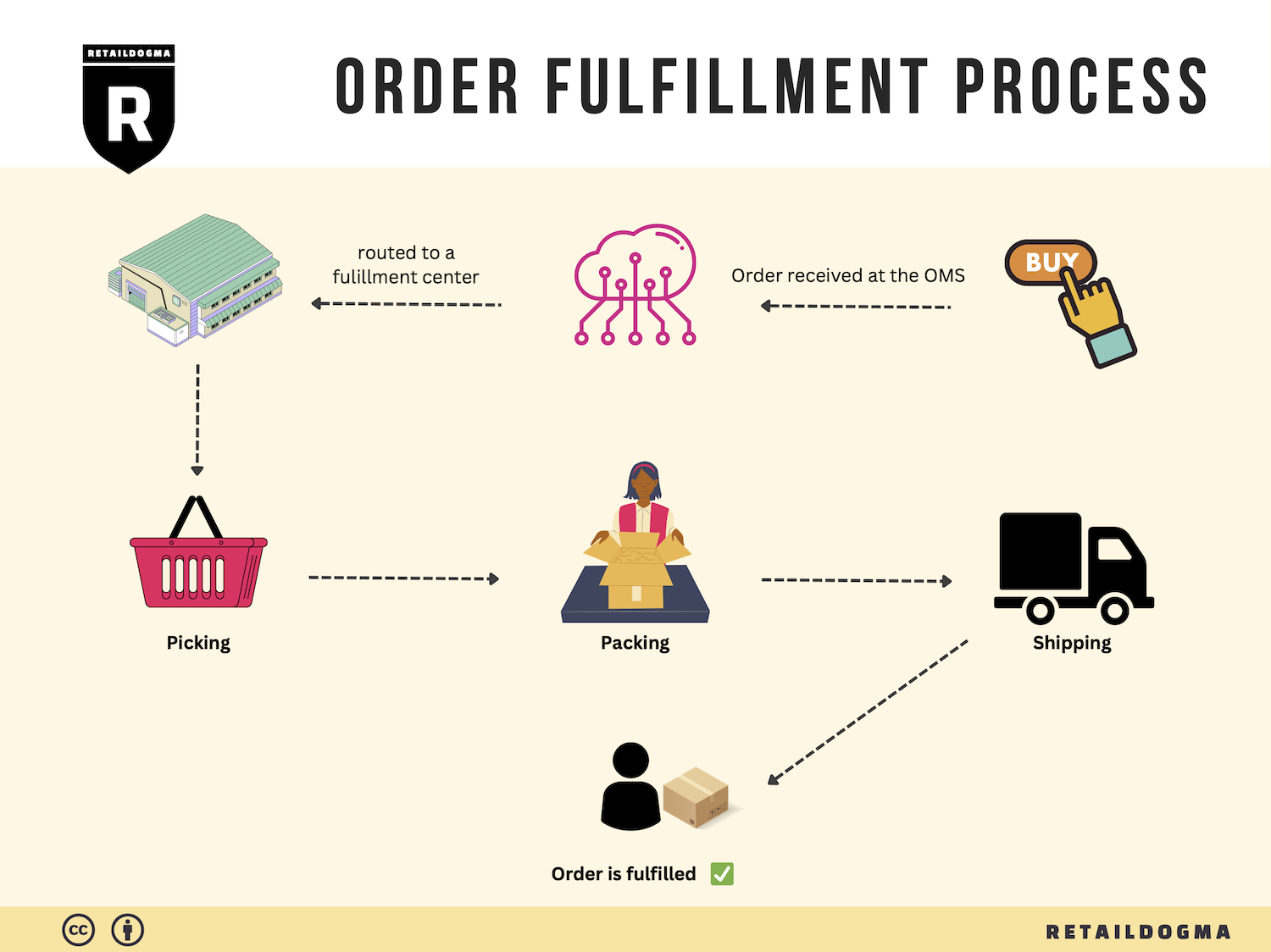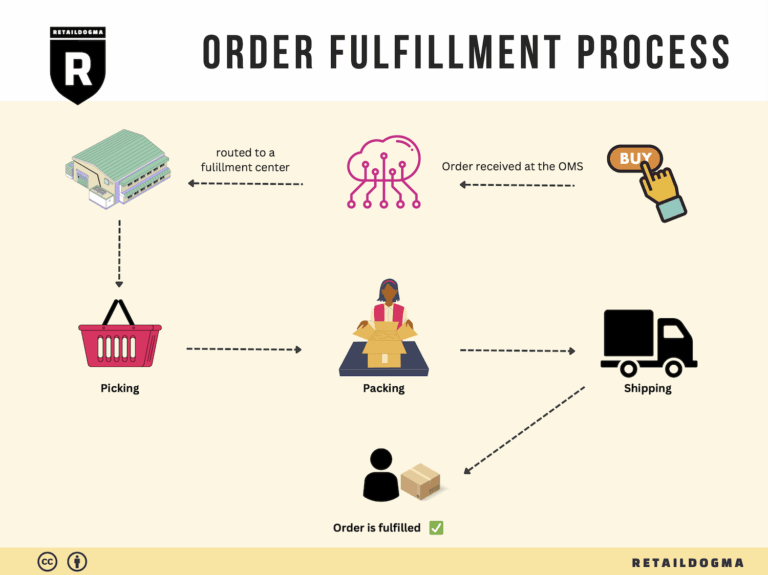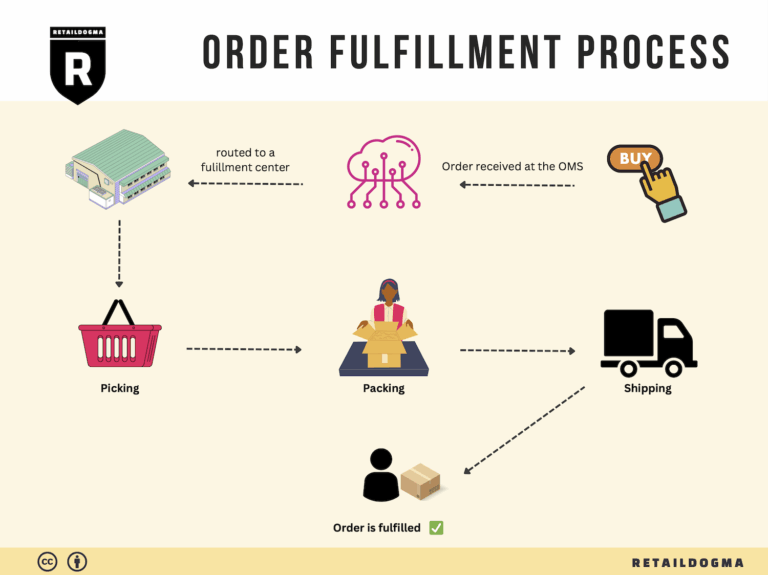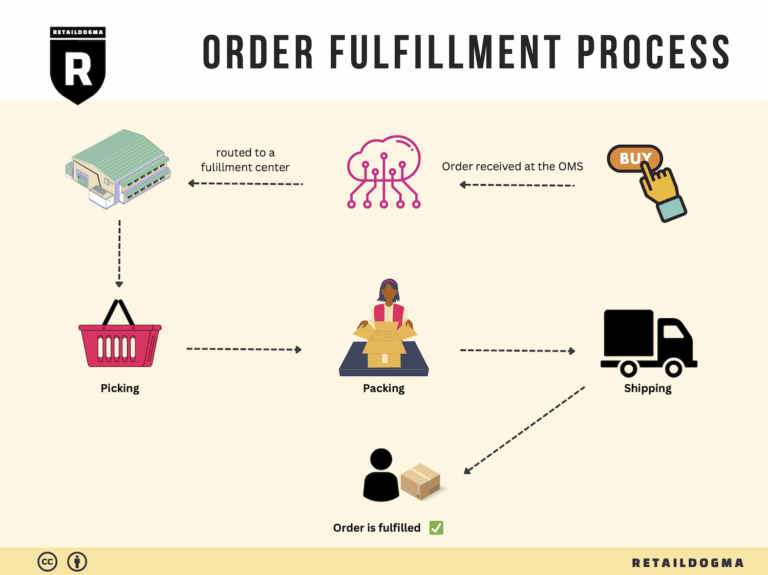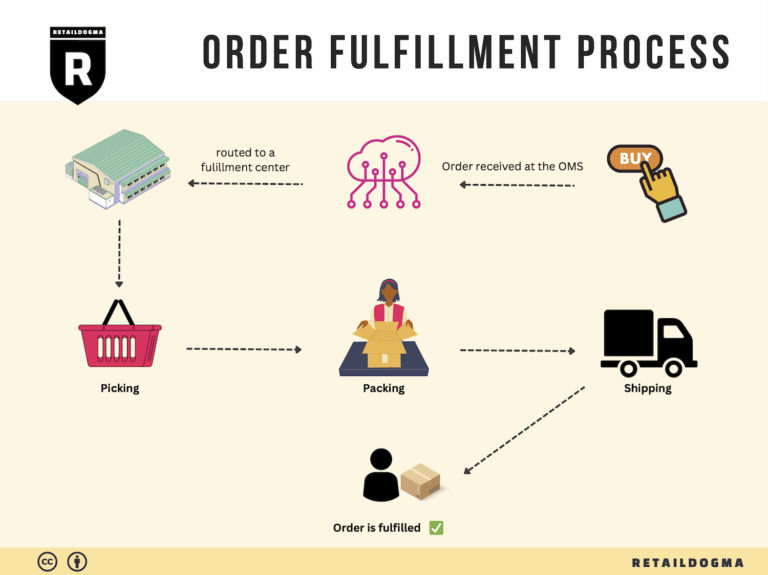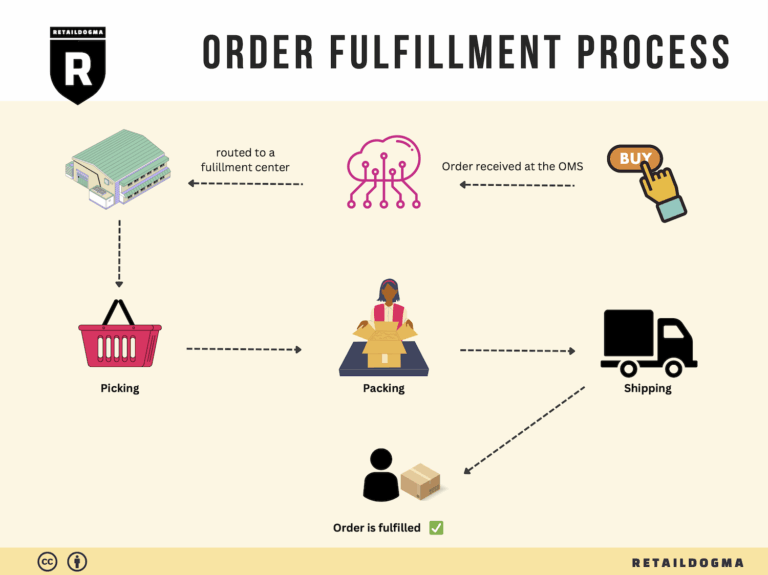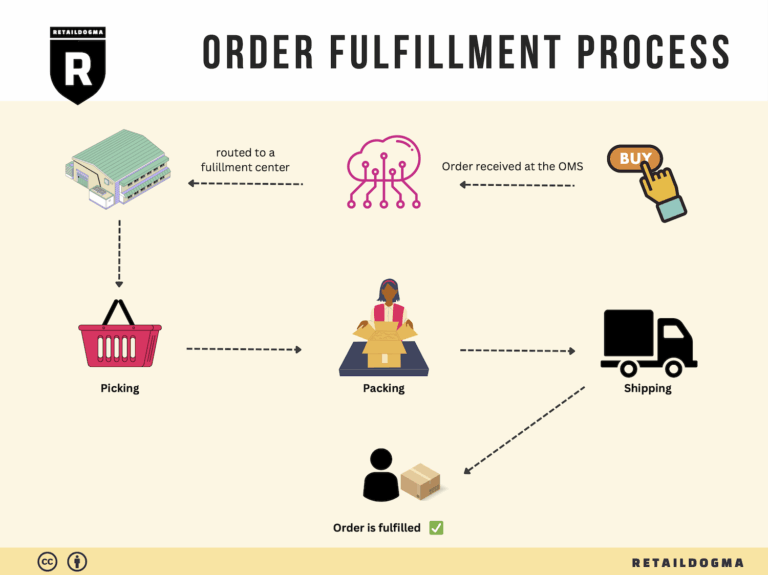Ecommerce Fulfillment Services: The Ultimate Guide (2025)
What is E-commerce Fulfillment? An Introduction for Growing Businesses
Understanding the Challenges of E-commerce Fulfillment
As an e-commerce business owner, you’ve likely felt the pressure of managing your orders, especially as your sales begin to scale. The excitement of growing sales often comes with the overwhelming task of packing and shipping products efficiently. This is where fulfillment plays a crucial role in your business’s success. Simply put, e-commerce fulfillment is the process of getting a product from your inventory to your customer’s doorstep. It encompasses everything from receiving orders and picking items to packing and shipping them out.
The Importance of Effective Fulfillment Strategies
For many growing businesses, the fulfillment process can become a significant pain point. A lack of streamlined operations can lead to delays, errors, and unsatisfied customers—all of which can harm your brand’s reputation. Understanding the various fulfillment models available to you is essential for streamlining this critical aspect of your operations.
In this guide, we will explore different fulfillment models, such as third-party logistics (3PL) and Fulfillment by Amazon (FBA). Each model has its pros and cons, and we’ll help you understand which might be the best fit for your business.
Core Services of E-commerce Fulfillment
We will also cover the core services offered by fulfillment partners, including inventory management, order processing, and shipping solutions. These services can significantly reduce your workload, allowing you to focus on growing your business rather than getting bogged down in logistics.
Choosing the Right Fulfillment Partner
Selecting the right fulfillment partner is a crucial decision that can impact your operational efficiency and customer satisfaction. We’ll discuss the key factors to consider when evaluating potential partners, including their technology, scalability, and customer service capabilities.
Understanding Pricing Structures
Finally, we will break down the pricing structures associated with different fulfillment options. Understanding how costs are calculated will empower you to make informed financial decisions that align with your budget and growth strategy.
Empowering Your Business for Success
The goal of this guide is to empower you with the knowledge and tools to make smart decisions about your logistics operations. By understanding the intricacies of e-commerce fulfillment, you can optimize your processes, enhance customer satisfaction, and ultimately drive your business’s success. Whether you’re just starting out or looking to scale, this guide is designed to provide practical insights that will support your growth journey.
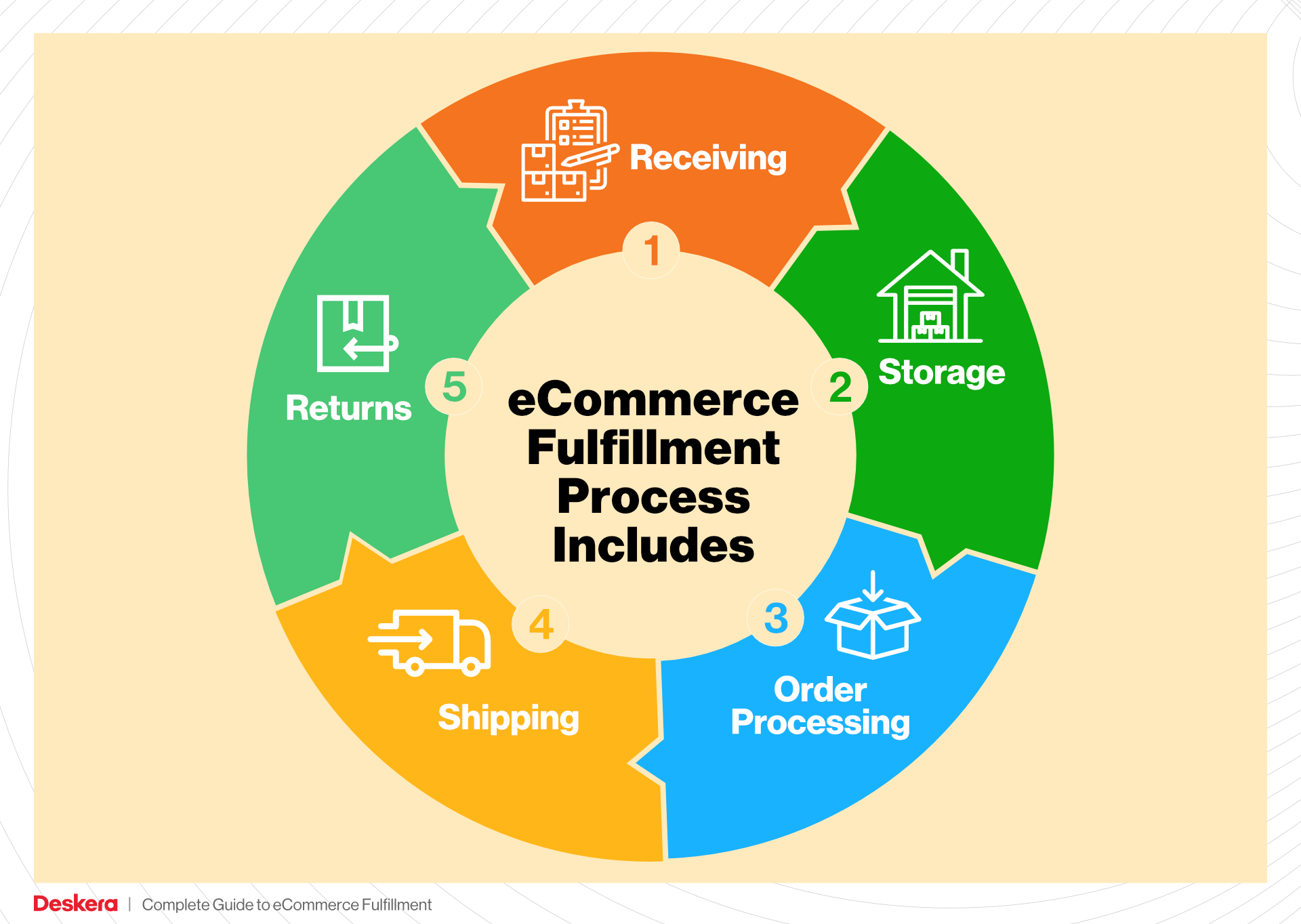
What You’ll Learn In This Guide
- What is E-commerce Fulfillment? An Introduction for Growing Businesses
- The Order Fulfillment Process: From ‘Buy’ Button to Customer’s Door
- Comparing Fulfillment Models: In-House vs. 3PL vs. Dropshipping
- A Deep Dive into Amazon FBA: Pros, Cons, and Who It’s For
- Core Services Offered by Fulfillment Centers
- How to Choose a Fulfillment Partner: A 6-Point Checklist
- Understanding Fulfillment Pricing: A Breakdown of Common Fees
- Frequently Asked Questions (FAQs) about Fulfillment
- Conclusion: Is Outsourcing Fulfillment the Right Move for Your Business?
- Important Disclaimer
The Order Fulfillment Process: From ‘Buy’ Button to Customer’s Door
1. Receiving Inventory
The first step in the order fulfillment process is receiving inventory. This involves the acceptance of goods into the fulfillment center. Upon arrival, products are checked against purchase orders to ensure accuracy. This is where key terms like SKU (Stock Keeping Unit) come into play. Each product is assigned a unique SKU, which streamlines the identification and tracking of inventory.
Importance: Effective inventory receiving is crucial because discrepancies at this stage can lead to stockouts or overstock situations, impacting customer satisfaction. Properly receiving inventory also ensures that all products are accounted for and in sellable condition.
Key Action: Implementing a robust inventory management system can help automate the receiving process, allowing for real-time tracking and reducing human error.
2. Warehouse Storage
After receiving, the next step is warehouse storage. This involves placing items in designated areas within the fulfillment center. Efficient storage practices utilize various strategies, such as zone picking or random storage, to optimize space and improve retrieval times.
Importance: Proper warehouse storage is vital for maximizing efficiency. An organized warehouse reduces the time it takes to locate products, which is crucial for meeting the demands of quick order fulfillment, especially in e-commerce where customer expectations are high.
Key Action: Utilizing advanced storage systems such as Automated Storage and Retrieval Systems (AS/RS) can enhance space utilization and speed up the storage process.
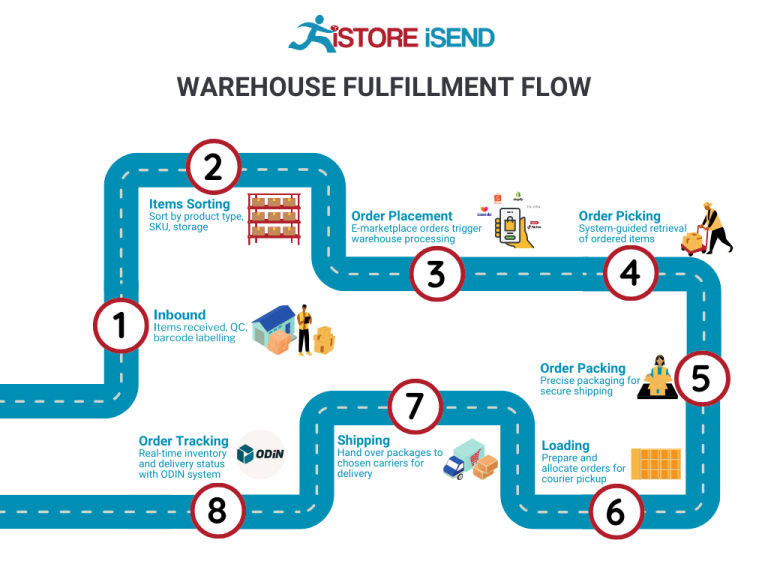
3. Order Picking
Once an order is placed, the next step is order picking. This involves retrieving the selected items from their storage locations. Picking can be accomplished through various methods, including single order picking, batch picking, or wave picking. A critical tool used in this phase is the pick list, which outlines the items and quantities needed for each order.
Importance: Efficient order picking is essential to ensure that orders are filled accurately and promptly. Errors in picking can lead to customer dissatisfaction and increased return rates.
Key Action: Implementing a pick-to-light system or using mobile devices for picking can significantly enhance accuracy and speed, leading to a more efficient fulfillment process.
4. Order Packing
After items are picked, they move to the order packing stage. This process involves assembling the products into a package that is secure and ready for shipping. During packing, it’s important to use appropriate packing materials to prevent damage during transit. The packing slip is another key document generated at this stage, detailing what is included in the shipment.
Importance: Proper packing is crucial for protecting products and ensuring they arrive at customers’ doors in perfect condition. This step also serves as a branding opportunity, as well-packaged items create a positive unboxing experience for customers.
Key Action: Standardizing packing procedures and using packing automation can help streamline this process, reduce costs, and improve overall efficiency.
5. Shipping & Delivery
The final step in the fulfillment process is shipping and delivery. Once orders are packed, they are labeled and handed over to logistics partners for transportation. This step involves selecting the best shipping methods and carriers based on factors such as cost, speed, and reliability. Key terms associated with this stage include last-mile delivery, which refers to the final leg of the shipment journey to the customer’s doorstep.

Importance: Timely and reliable shipping is vital for customer satisfaction. In today’s e-commerce landscape, customers expect fast delivery, often within one to two days. Delays at this stage can severely impact customer loyalty and brand reputation.
Key Action: Establishing partnerships with multiple carriers and utilizing route optimization software can enhance shipping efficiency and ensure that orders are delivered as promised.
In conclusion, mastering the order fulfillment process from receiving inventory to shipping and delivery is essential for e-commerce businesses looking to scale. Each step is interconnected, and optimizing these processes can lead to improved customer satisfaction, increased efficiency, and ultimately, business growth.
Comparing Fulfillment Models: In-House vs. 3PL vs. Dropshipping
Fulfillment Model Comparison Table
| Model | Who Handles Inventory | Best For (Business Stage) | Key Advantage | Key Disadvantage |
|---|---|---|---|---|
| In-House Fulfillment | The business itself | Established businesses | Full control over operations and inventory | High fixed costs and resource investment |
| Third-Party Logistics (3PL) | A third-party provider | Growing businesses | Scalability and flexibility | Less control over logistics and operations |
| Dropshipping | Supplier or manufacturer | Startups and small businesses | Low upfront investment and risk | Lower profit margins and longer shipping times |
In-House Fulfillment
In-house fulfillment involves a business managing its own inventory, warehousing, and order processing. This model is often favored by established businesses that have the resources to maintain their own fulfillment operations. By handling logistics internally, companies gain complete control over their supply chain, ensuring that quality standards are met and brand consistency is maintained throughout the customer experience. This level of control can also facilitate faster response times to customer inquiries and issues, as well as the ability to customize packaging and shipping processes. However, the downside to in-house fulfillment is the significant investment in infrastructure, staffing, and technology required to effectively manage operations. Businesses must also navigate challenges such as maintaining adequate inventory levels, managing shipping logistics, and scaling operations as demand fluctuates.
Third-Party Logistics (3PL)
Third-party logistics providers offer businesses the opportunity to outsource their fulfillment needs. In this model, a third-party company manages storage, inventory, order processing, and shipping on behalf of the business. This approach is particularly beneficial for growing companies that need to scale their operations without the burden of investing in additional warehouse space or staff. 3PL providers can offer flexibility and expertise in logistics, allowing businesses to focus on core functions such as marketing and product development. Additionally, many 3PLs have established networks that can lead to reduced shipping costs and faster delivery times. However, the trade-off is a potential loss of control over the fulfillment process, which can result in inconsistencies in service quality and brand representation. Businesses must also be cautious about the 3PL’s reliability and its capacity to adapt to changing business needs.
Dropshipping
Dropshipping is a fulfillment model where the retailer does not keep goods in stock but instead transfers customer orders and shipment details directly to the supplier, who then ships the products directly to the customer. This model is particularly appealing to startups and small businesses with limited resources, as it requires minimal upfront investment and virtually eliminates the risks associated with holding inventory. Retailers can offer a broad range of products without the need for warehousing or fulfillment staff. However, the drawbacks of dropshipping include lower profit margins, as suppliers often charge a premium for fulfillment services. Additionally, shipping times may be longer, and retailers have less control over product quality and inventory levels, which can lead to customer dissatisfaction. As a result, it’s essential for businesses using this model to carefully vet suppliers and manage customer expectations regarding delivery times and product quality.
Conclusion
Selecting the appropriate fulfillment model is critical for e-commerce businesses aiming to scale efficiently. Each model—In-House, 3PL, and Dropshipping—offers distinct advantages and challenges that must align with the business’s current stage, resources, and long-term goals. By understanding these differences, e-commerce business owners can make informed decisions that enhance their operational efficiency and customer satisfaction.
A Deep Dive into Amazon FBA: Pros, Cons, and Who It’s For
Understanding Fulfillment by Amazon (FBA)
Fulfillment by Amazon (FBA) is a service provided by Amazon that allows sellers to store their products in Amazon’s fulfillment centers. In turn, Amazon takes care of storage, packaging, shipping, and customer service for those products. This service has become increasingly popular among e-commerce businesses, especially those looking to leverage Amazon’s vast reach and logistics capabilities.
How FBA Works
-
Product Listing: Sellers create product listings on Amazon and indicate which products they want to fulfill through FBA.
-
Inventory Shipment: Sellers ship their inventory to Amazon’s fulfillment centers. Amazon has numerous centers across the globe, which enables efficient distribution based on geographic demand.
-
Storage: Once the inventory arrives at Amazon, it is stored until an order is placed. Amazon utilizes advanced inventory management systems to track stock levels in real-time.
-
Order Fulfillment: When a customer places an order, Amazon picks, packs, and ships the product on behalf of the seller. This includes handling returns and customer inquiries, which can significantly reduce the operational burden on sellers.
-
Customer Service: Amazon provides customer support for FBA products, which enhances the customer experience and allows sellers to focus on other aspects of their business.
-
Prime Eligibility: Products fulfilled through FBA are eligible for Amazon Prime, which can increase visibility and sales due to the trust associated with Prime shipping.
Pros of Fulfillment by Amazon
1. Prime Eligibility
One of the most significant advantages of using FBA is that products become eligible for Amazon Prime. This not only enhances visibility but also attracts a large customer base that prefers the fast and free shipping that Prime offers.
2. Customer Trust
Amazon is a well-established platform known for its customer service and reliability. By using FBA, sellers benefit from the trust associated with the Amazon brand, which can lead to higher conversion rates and repeat customers.
3. Multi-Channel Fulfillment
FBA is not limited to Amazon sales. Sellers can use FBA to fulfill orders from their own websites or other sales channels, allowing for a streamlined logistics process across multiple platforms.
4. Reduced Operational Burden
With Amazon handling storage, packing, and shipping, sellers can focus on growing their business instead of managing logistics. This is particularly beneficial for small to medium-sized enterprises that may lack the resources to handle fulfillment in-house.
5. Scalability
FBA allows businesses to scale quickly. As demand increases, sellers can send more inventory to Amazon without the need to invest in their own warehousing or logistics infrastructure.
Cons of Fulfillment by Amazon
1. High Fees
While FBA offers many advantages, it comes at a cost. Sellers must pay for storage fees and fulfillment fees, which can significantly cut into profit margins, particularly for low-cost items. Additionally, fees can vary based on the size and weight of the products.
2. Strict Inventory Rules
Amazon has strict guidelines regarding inventory management. Sellers must adhere to these rules to avoid penalties, which can be burdensome for businesses that require flexibility in their operations.
3. Commingling Risks
FBA products may be commingled with other sellers’ inventory in Amazon’s warehouses. This can lead to issues if a customer receives a damaged or defective item, as it may be difficult to trace the source of the problem back to the original seller.
4. Limited Control Over Branding
When using FBA, sellers lose some control over the packaging and branding of their products. Amazon uses generic packaging for shipping, which may not align with a seller’s brand identity.
5. Dependency on Amazon
Relying heavily on FBA can create a dependency on Amazon’s ecosystem. Any changes in Amazon’s policies or fees can directly impact a seller’s business, making it essential to maintain a diversified sales strategy.
Who is FBA Best For?
Fulfillment by Amazon is particularly well-suited for:
-
Small to Medium-Sized Businesses: Businesses that lack the resources or infrastructure to manage their own fulfillment can greatly benefit from Amazon’s logistics capabilities.
-
E-commerce Startups: New businesses looking to enter the market quickly can leverage FBA to gain visibility and credibility without the upfront investment in logistics.
-
Sellers with High Volume Products: Those who sell products with high turnover rates can take advantage of FBA’s scalable model, allowing them to grow their business without the constraints of managing logistics.
-
Brands Seeking to Reach a Broader Audience: Companies looking to tap into Amazon’s vast customer base and increase their sales channels can find FBA to be an effective solution.
In conclusion, while Fulfillment by Amazon provides a range of benefits that can facilitate growth and streamline operations for e-commerce businesses, it is essential to weigh these against the potential drawbacks. Understanding your business’s specific needs and how FBA aligns with your operational strategy will be crucial in making the right decision.
Core Services Offered by Fulfillment Centers
Inventory Management & Warehousing
Inventory management and warehousing form the backbone of any successful e-commerce fulfillment operation. Fulfillment centers, such as Chewy’s Reno facility, provide expansive storage space, allowing businesses to maintain optimal inventory levels without the overhead costs associated with owning and managing a warehouse.
These centers utilize sophisticated inventory management systems that track stock levels, manage replenishment, and forecast demand based on historical sales data. This technology minimizes the risk of overstocking or stockouts, ensuring that products are available when customers place orders.
The benefits of effective inventory management include enhanced operational efficiency and improved cash flow. E-commerce businesses can respond quickly to market changes and customer demands, reducing lead times and increasing customer satisfaction. By outsourcing warehousing to a fulfillment center, businesses also free themselves from the logistical challenges of managing physical space, enabling them to focus on growth and customer engagement.
Pick and Pack Services
Pick and pack services are integral to the order fulfillment process. This service involves selecting items from the warehouse (picking) and preparing them for shipment (packing). Fulfillment centers like Chewy’s employ streamlined processes and automation technologies to enhance the accuracy and speed of these operations.
The picking process often uses advanced methodologies such as “push-to-pick,” where products are brought to workers rather than requiring them to traverse the warehouse, significantly reducing labor time and physical strain. Once items are picked, they are packed into boxes that are optimized for shipping, ensuring that products arrive safely and in good condition.
The advantages of pick and pack services include faster order processing times, improved order accuracy, and reduced shipping costs. By outsourcing this function, e-commerce businesses can offer quicker delivery options, such as one- to two-day shipping, which is increasingly becoming a customer expectation. This service not only enhances customer satisfaction but also strengthens brand loyalty.
Kitting and Assembly
Kitting and assembly refer to the process of bundling individual items together to create a ready-to-sell product. This can involve assembling products that require multiple components or simply grouping related items for promotional purposes. Fulfillment centers provide specialized kitting services, allowing businesses to offer unique product bundles without needing to manage the assembly process in-house.
For example, a pet supply company may offer a “starter kit” that includes food, toys, and grooming supplies. The fulfillment center assembles these kits and prepares them for shipment, saving the business time and labor costs.
The key benefits of kitting and assembly include the ability to create value-added products, streamline inventory management, and enhance marketing efforts. Businesses can differentiate themselves in a crowded marketplace by offering unique bundles tailored to customer needs. This service also simplifies logistics, as businesses can ship complete kits rather than individual items, reducing handling and shipping costs.
Returns Management (Reverse Logistics)
Returns management, or reverse logistics, is a critical service provided by fulfillment centers that enables businesses to handle product returns efficiently. This process involves receiving returned items, inspecting them, restocking or refurbishing as necessary, and managing the overall return flow back to the inventory system.
Fulfillment centers streamline this process using technology and established workflows that minimize the time and costs associated with returns. They can categorize returned items, assess their condition, and determine the best course of action—whether that involves restocking, discounting for resale, or disposal.
The benefits of effective returns management include enhanced customer satisfaction and retention. A well-managed return process can turn a potentially negative experience into a positive one, as customers appreciate hassle-free returns. Furthermore, effective reverse logistics can recover value from returned products, boosting overall profitability. For e-commerce businesses, a robust returns management system is not just an operational necessity; it’s a competitive advantage that can significantly impact customer loyalty and brand reputation.
By leveraging the core services offered by fulfillment centers, e-commerce businesses can optimize their operations, improve customer satisfaction, and ultimately drive growth. Services such as inventory management, pick and pack, kitting and assembly, and returns management are essential components that allow businesses to scale efficiently in a rapidly evolving digital marketplace.
How to Choose a Fulfillment Partner: A 6-Point Checklist
Location & Warehouse Network
Importance: The geographical location of your fulfillment partner’s warehouses directly impacts shipping times and costs. A strategically located fulfillment center can significantly enhance your delivery speed, particularly if you’re targeting specific regions.
Questions to Ask:
– Where are your fulfillment centers located, and how does that align with my target customer base?
– Do you have a network of warehouses that can cover multiple regions effectively?
– How do you handle shipping logistics to ensure timely deliveries across different areas?
Technology & Integrations
Importance: In today’s digital landscape, technology plays a crucial role in the efficiency of supply chain operations. A partner with robust technology can provide real-time inventory management, order tracking, and seamless integration with your e-commerce platform.
Questions to Ask:
– What fulfillment management software do you use, and does it integrate with my existing e-commerce platform?
– Can you provide real-time inventory updates and tracking for my orders?
– What kind of data analytics and reporting capabilities do you offer to help me understand my fulfillment performance?
Specializations (e.g., Cold Storage, Oversized Items)
Importance: If your product line includes items that require special handling—such as perishable goods or oversized items—it’s essential to partner with a fulfillment provider that has the necessary infrastructure and expertise.
Questions to Ask:
– Do you have specialized facilities for handling cold storage or fragile items?
– What experience do you have in fulfilling orders for products similar to mine?
– Can you accommodate unique packaging or handling requirements that my products may need?
Scalability & Capacity
Importance: As your business grows, your fulfillment needs will evolve. A partner that can scale operations in line with your growth ensures that you won’t face bottlenecks during peak seasons or as your order volume increases.
Questions to Ask:
– What is your current capacity, and how do you plan to scale it in the future?
– How do you handle peak seasons or unexpected spikes in demand?
– Can you provide examples of how you’ve scaled operations for other clients?
Pricing and Contracts
Importance: Understanding the pricing structure and contract terms of a fulfillment partner is critical for maintaining profitability. Transparent pricing can help you budget accurately and avoid unexpected costs.
Questions to Ask:
– What are your pricing models (e.g., per order, storage fees, shipping costs)?
– Are there any additional fees I should be aware of (e.g., for returns, special handling)?
– Can you explain the terms of your contract, including any minimum order commitments or cancellation policies?
Customer Support & Reviews
Importance: The quality of customer support can make a significant difference in your experience with a fulfillment partner. Responsive and knowledgeable support can help resolve issues quickly and maintain smooth operations.
Questions to Ask:
– What kind of customer support do you offer (e.g., dedicated account manager, 24/7 support)?
– Can you provide references or case studies from current clients to assess your service quality?
– How do you handle issues or discrepancies in order fulfillment?
Conclusion
Choosing the right fulfillment partner is a critical decision that can influence your operational efficiency and customer satisfaction. By using this checklist as a guide, you can make an informed decision that aligns with your business goals and customer needs. Always remember to conduct thorough due diligence, assess potential partners against these criteria, and ensure their capabilities align with your specific requirements. This strategic approach will help you build a strong partnership that supports your growth and enhances your overall supply chain performance.
Understanding Fulfillment Pricing: A Breakdown of Common Fees
Initial Setup Fees
Initial setup fees are one-time charges that cover the costs associated with establishing your account with a fulfillment provider. This may include software integration, account configuration, and onboarding processes. These fees can vary significantly based on the complexity of your operations and the fulfillment provider’s systems. For example, if you’re integrating with a new e-commerce platform, you may incur additional charges for custom development work.
To calculate these fees, providers typically assess the amount of time and resources required for setup. Businesses should ask for a detailed breakdown of what the initial fees cover and whether they can be waived or reduced based on expected order volumes.
Receiving Fees
Receiving fees are charged when the fulfillment center receives your inventory. These costs cover the labor and equipment used to unload, inspect, and catalog your products. The fees can vary based on the type of products being received—bulky or heavy items may incur higher costs due to the extra handling required.
Receiving fees are generally calculated on a per-pallet or per-sku basis. For instance, a fulfillment center might charge a flat fee for each pallet received, or they may charge based on the number of unique SKUs being processed. Businesses should inquire about any minimum charges or additional costs associated with special handling requirements, such as temperature control for sensitive items.
Storage Fees (per pallet/bin)
Storage fees are recurring charges for keeping your inventory in the fulfillment center’s warehouse. These fees can be structured in two main ways: per pallet or per bin. A pallet refers to a standard-sized shipping unit, while a bin is a smaller storage unit that may hold multiple items.
The calculation of storage fees typically depends on the amount of space your inventory occupies. Many fulfillment centers charge on a monthly basis, with costs varying based on the type of items stored. For example, bulky or heavy goods might incur higher storage fees compared to smaller, lightweight items. It’s essential to understand whether the provider offers tiered pricing based on volume, as this can help optimize your costs.
Pick & Pack Fees (per item/order)
Pick and pack fees are incurred each time an order is processed. This fee covers the labor involved in locating items in the warehouse, packing them for shipment, and preparing shipping labels. The charges can vary based on the complexity of the order—orders with multiple items may be more expensive due to the additional labor required.
These fees are generally calculated per item or per order. Some fulfillment centers offer discounted rates for bulk orders or for businesses with high order volumes. It’s advisable to clarify whether the pick and pack fee includes packing materials or if those will be charged separately.
Shipping Fees
Shipping fees are perhaps the most variable cost in fulfillment pricing. These fees depend on several factors, including the shipping method selected (standard, expedited, etc.), the weight and dimensions of the package, and the distance to the delivery address. Fulfillment centers may have partnerships with various carriers, which can affect shipping rates.
To calculate shipping fees, providers typically consider the shipping zone (distance from the fulfillment center to the destination), the weight of the package, and any dimensional weight pricing that may apply. Businesses should explore options for negotiated shipping rates, especially if they plan to ship a high volume of orders.
Tips for Getting an Accurate Quote
-
Be Transparent About Your Needs: Provide potential fulfillment partners with detailed information about your inventory, order volume, and specific needs. This will help them give you a more accurate quote.
-
Request Itemized Pricing: Ensure the quote includes a breakdown of all potential fees. This transparency helps you understand the overall cost structure and identify areas for potential savings.
-
Evaluate Terms and Conditions: Pay attention to any minimum charges, long-term contracts, or hidden fees that may not be apparent at first glance.
-
Consider Volume Discounts: Ask about discounts for higher volumes, as many fulfillment centers offer tiered pricing that can significantly reduce costs.
-
Negotiate: Don’t hesitate to negotiate terms, especially if you have competitive quotes from other providers.
By understanding these common fees and how they are calculated, e-commerce business owners can make informed decisions that align with their operational goals and budget constraints.
Frequently Asked Questions (FAQs) about Fulfillment
1. What is the Chewy Fulfillment Center RNO1?
The Chewy Fulfillment Center RNO1 is a state-of-the-art 795,000-square-foot facility located in Reno, Nevada. It serves as a critical distribution point for Chewy’s e-commerce operations, particularly for customers in the Pacific Northwest. This center utilizes advanced automation technologies to enhance efficiency and ensure quick order fulfillment, enabling Chewy to provide a one- to two-day delivery promise.
2. How does the Chewy fulfillment process work?
The fulfillment process at the Chewy RNO1 center begins with order placement by customers. Once an order is received, products are picked from the shelves using a push-to-pick methodology, where items are brought to team members, reducing physical strain. The orders are then packed and shipped to the customer, leveraging Chewy’s extensive logistics network to ensure timely delivery.
3. What are the key benefits of using the Chewy Fulfillment Center?
Using the Chewy Fulfillment Center offers several advantages:
– Speedy Delivery: Customers in the Pacific Northwest can expect one- to two-day shipping.
– Advanced Automation: The facility employs modern automation technologies that improve efficiency and reduce labor intensity.
– Scalability: The center supports Chewy’s growth and ability to handle increased order volumes, especially for bulky pet products.
4. What is the difference between a warehouse and a fulfillment center?
A warehouse is primarily used for storing goods, while a fulfillment center is designed for order processing, packing, and shipping. Fulfillment centers are equipped with technology and systems to handle logistics operations, ensuring that orders are filled and dispatched quickly, whereas warehouses focus on inventory management and storage without a direct emphasis on shipping efficiency.
5. What is a 3PL (Third-Party Logistics)?
A 3PL (Third-Party Logistics) provider is a company that offers logistics services, including warehousing, transportation, and order fulfillment, on behalf of other businesses. Companies often partner with 3PLs to streamline their supply chain operations, reduce costs, and improve delivery times without having to manage these functions in-house.
6. How much do fulfillment services cost?
The cost of fulfillment services varies based on several factors, including order volume, storage space requirements, and the complexity of services needed. Typically, costs can include warehousing fees, picking and packing fees, shipping costs, and any additional services like returns handling. Businesses should request quotes from multiple providers to compare pricing structures and find the best fit for their needs.
7. What types of products does the Chewy fulfillment center handle?
The Chewy fulfillment center primarily handles pet-related products, including pet food, toys, supplies, and medications. The facility is specifically designed to accommodate heavy and bulky items, ensuring that these products can be efficiently stored and shipped to customers.
8. What roles are available at the Chewy Fulfillment Center RNO1?
The Chewy Fulfillment Center RNO1 offers various job opportunities, including fulfillment specialists, forklift operators, IT support, and human resources roles. As the facility ramps up operations, Chewy continues to actively recruit to build a skilled workforce that supports its logistics and fulfillment goals.
9. How does Chewy ensure order accuracy in its fulfillment process?
Chewy employs several methods to ensure order accuracy, including automated picking systems, real-time inventory management, and thorough packing checks. These processes help minimize errors and ensure that customers receive the correct products in a timely manner.
10. How can businesses partner with Chewy for fulfillment services?
Businesses interested in partnering with Chewy for fulfillment services should reach out directly to Chewy’s corporate or logistics teams. They can discuss potential collaboration opportunities, including third-party logistics arrangements or product distribution partnerships, to leverage Chewy’s extensive fulfillment capabilities and customer base.
Conclusion: Is Outsourcing Fulfillment the Right Move for Your Business?
Evaluating the Benefits of Outsourcing Fulfillment
Outsourcing fulfillment can be a transformative decision for e-commerce businesses looking to scale. By partnering with a fulfillment service, you can save precious time that can be redirected towards core business activities such as marketing and product development. This is particularly beneficial for small to mid-sized companies that may lack the resources to manage logistics effectively.
Moreover, scalability is a significant advantage. As your business grows, so do your fulfillment needs. A dedicated fulfillment partner can accommodate fluctuating order volumes, ensuring that you can meet customer demand without the burden of investing in additional warehousing or staff. This flexibility allows you to focus on expanding your product line or entering new markets with confidence.
Additionally, leveraging a fulfillment center provides access to specialized expertise and technology. For example, facilities like Chewy’s Reno center utilize advanced automation and efficient workflows designed to streamline the order fulfillment process. This level of expertise can result in faster shipping times and improved customer satisfaction—key components for retaining loyal customers and enhancing your brand’s reputation.
However, the choice of fulfillment partner is critical to your success. It’s essential to select a provider that aligns with your business goals, understands your unique needs, and has the capability to grow alongside you.
Next Steps: Audit Your Shipping Process
To determine whether outsourcing fulfillment is the right move for your business, conduct a thorough audit of your current shipping processes. Analyze your operational bottlenecks, shipping costs, and customer satisfaction metrics. This insight will guide you in deciding if a fulfillment partner can enhance your efficiency and support your growth objectives. Remember, the right partnership can pave the way for your business to thrive in an increasingly competitive e-commerce landscape.
Important Disclaimer
⚠️ Important Disclaimer
The information in this guide is for educational purposes. Fulfillment services, pricing, and platform features change frequently. Always conduct your own due diligence and consult with providers directly before making business decisions.
